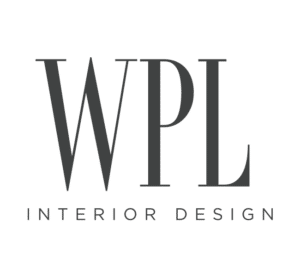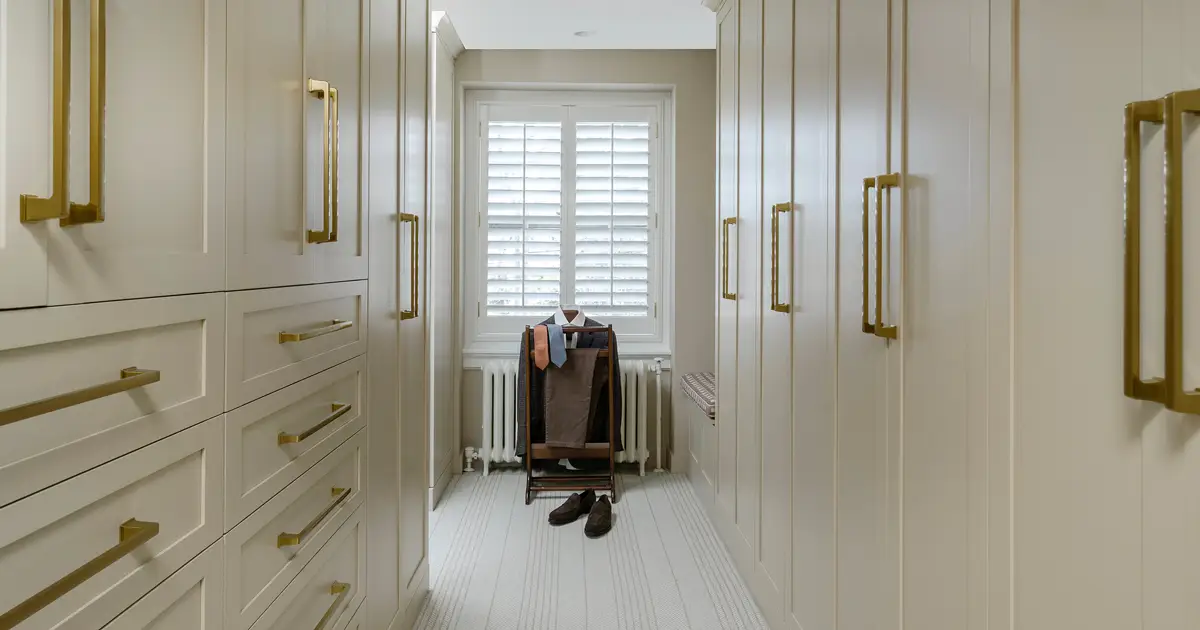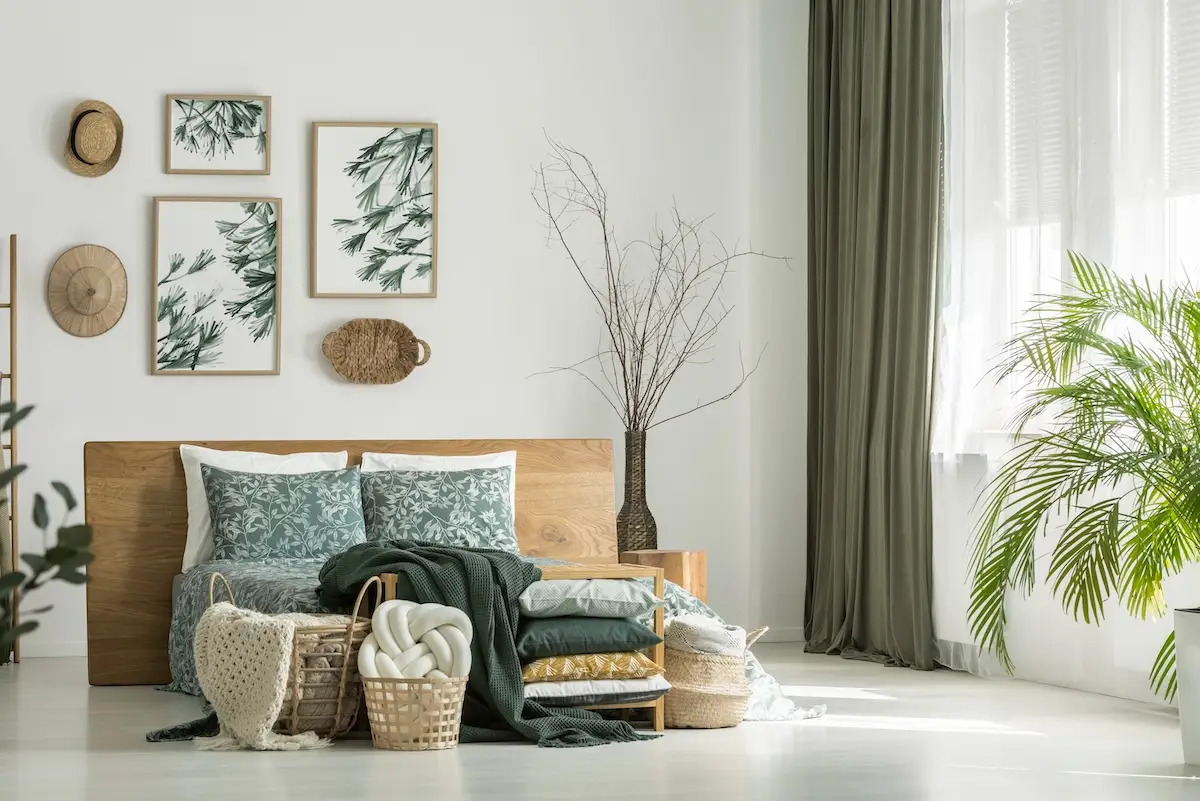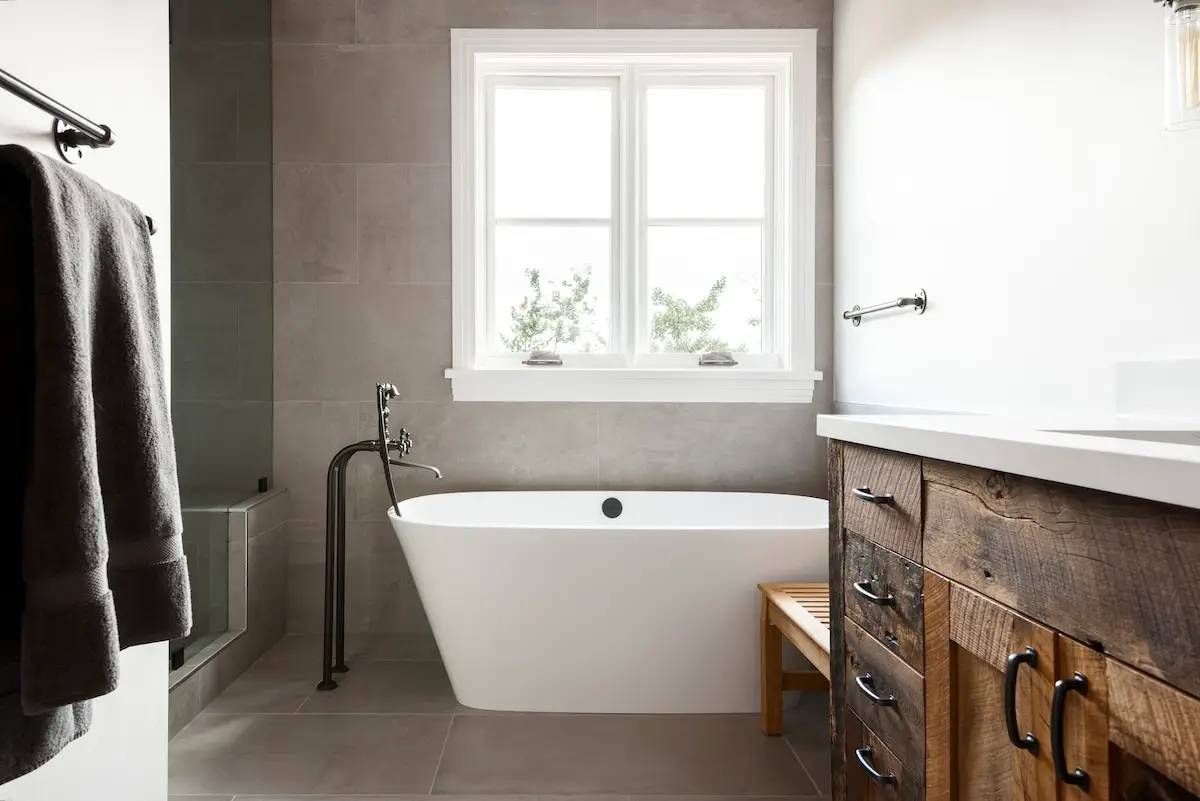If there is one design theme known for blending modern lines and warmth, it’s Scandinavian design. The style began in the early 1900s and has been so successful that it is still popular and used in many modern homes. As designers, we often feature Scandinavian styling and consider it whenever a current project needs some warming up. So what is this style exactly, and what are the key elements? Let’s take a look at the elements of Scandinavian design.
What is Scandinavian design?
Scandinavian design is about clean lines, minimalistic style, and natural materials. With modern design as a primary guide, it embraces simplicity and functionality to create pleasing and highly practical spaces. At the same time, the elements of Scandinavian design include being light, airy, and simple, all while having a timeless and versatile look.
The natural elements bring warmth and coziness to rooms while being functional enough to accommodate home storage in all four seasons.
Scandinavian design creates a harmonious balance between form and function, creating beautiful, practical, and livable spaces.
How is Scandinavian Design Different Than Japandi?
If you have heard of Japandi, you will hear many of the same traits as Scandinavian design, but there are some key differences. Both Scandinavian design and Japandi style are inspired by minimalism, but Scandinavian design has a stronger focus on light colors, natural materials, and simple shapes. Also, Japandi focuses on blending Japanese and Scandinavian elements together. This blend includes a combination of wood, metal, and natural textiles and a mix of traditional and modern Japanese design elements.
Key Elements of Scandinavian Design
Here are the top characteristics of Scandinavian design.
Clean Lines
The simple look is thanks to clean horizontal and vertical lines and simplified patterns and shapes. Scandinavian shapes are carefully sculpted to show off the beauty of the wood material while literally shaving away decorative elements for a less-is-more look.
A Minimalistic Bent
Every element in a Scandinavian space has a purpose and is intentionally placed to create a sense of order and serenity. From furniture to decor, clean composition ensures that each item stands out while complementing the overall design scheme.
At the same time, Scandinavian design prioritizes storage space with clever solutions that hide daily items away to maintain a sleek and uncluttered look.
Wood Accents
In the Nordic tradition, natural materials are cherished, and wood is one of the most beloved. From sleek, light wood floors to beautiful, handcrafted furniture pieces, Scandinavian interiors often showcase the beauty of natural wood.
Wood provides an organic look and can be cut into shapes in appealing ways. With simplicity as a guide, the designs and grain patterns work together beautifully.
Neutral Color Tones
Part of the uncluttered and warm look is thanks to the neutral color palette. Whites, light woods, greys, and browns create a calm base for other designs and colors without overwhelming the space.
Small Pops of Color
Though Scandinavian design is big on neutrals, it isn’t devoid of color. In fact, adding small pops of color is a great way to bring life and vibrancy to a room, even when done sparingly. Whether it’s through accent pillows, artwork, or a carefully chosen piece of furniture, occasional pops of color make a significant impact in a space.
Natural Materials
Scandinavian design emphasizes using natural materials, such as wood, stone, and textiles. Combined with neutral tones in fabric and leather, the blend creates a sense of connection to nature.
Functional Storage
Scandinavia has more than its fair share of cold weather, so the design offers plenty of clean storage to hold everything they need, from coats to boots. Its focus on intelligent functionality keeps the home clutter-free and organized.
Mid-Century Modern Furniture
Mid-century furniture has its roots in Scandinavian aesthetics. The furniture has a unique blend of being elegant, approachable, and fun, and this blend is a significant part of why Scandinavian design is so comfortable.
Metal Accents
Metal accents offer a touch of sophistication and contrast to the wood material and neutral color palettes. From a sleek metal pendant light or a minimalist iron chair frame, metal elements add a contemporary edge to the overall design while not overpowering the natural look.
Natural Textures
Natural materials like wool, linen, and leather create a sense of comfort and coziness and create a natural, yet sophisticated look. The texture also adds depth and character to the overall design while creating a serene and inviting atmosphere.
Natural Light
With long, harsh winters and limited daylight, Scandinavians have learned to master the art of maximizing natural light. Large windows and skylights create a bright and airy atmosphere and promote a sense of well-being and connection to nature. Even artificial light adds warmth and coziness.
Simplified Patterns
True to form, Scandinavian patterns are more simple than other styles. It uses iconic geometric patterns inspired by traditional folk art and floral motifs reminiscent of the natural landscapes of the Nordic countries.
Indoor Plants
Greenery is a primary element of Scandinavian design. Plants add life and freshness to any space and promote a sense of well-being. Plants also purify the air, complementing the natural theme.
Whether it is plants or the materials used in making Scandinavian furniture and cabinetry, the design is a natural choice for a modern home that exudes warmth and serenity.




